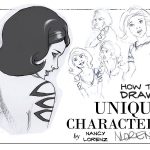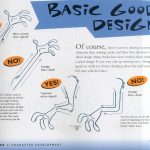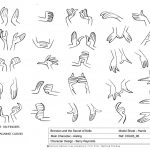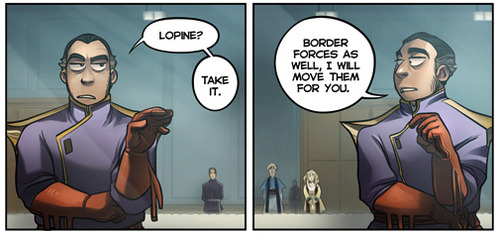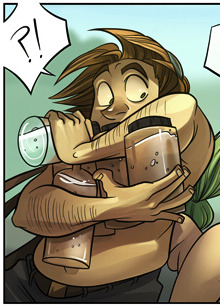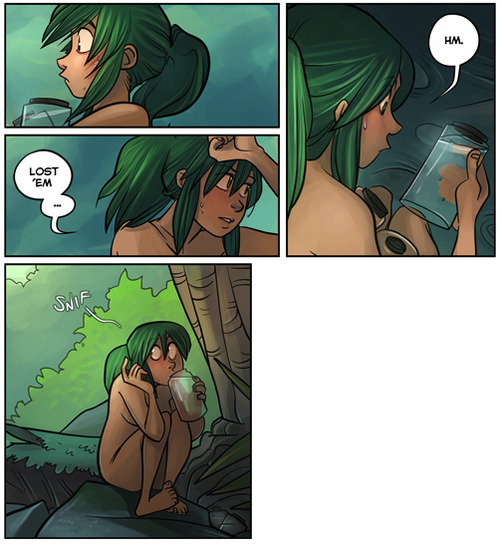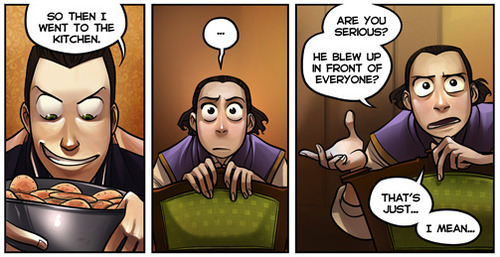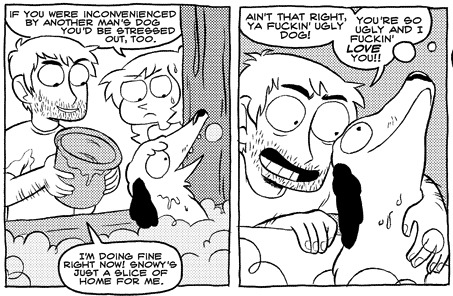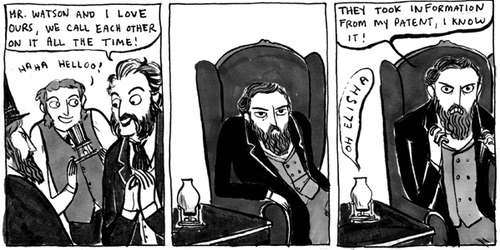Tag: body language
Untitled
drawing tips from Animating the Looney Tunes way. hand from the secret of kells, Aisling!
Drawing Hands: Augmenting an Idea
Most people understand the importance of facial expressions in cartooning, but if there’s anything that’s routinely neglected, it’s hands. It’s a shame too, since hands are the second thing we instinctively look at when a person is speaking to us. We use our hands in a variety of ways to accentuate our point; if we actively restrict ourselves from gesturing at all, natural speech actually become rather difficult. This goes beyond dialogue, too: hand gestures lead us to what’s important, and they’re the most frequent body part to indicate action and interaction with the environment, as well as other characters. Hands dominate the focus on what’s important in a scene, and to neglect this is to neglect a pivotal tool in storytelling.
The Meek is an excellent example of a webcomic that knows how to use hands. They’re not just used to accentuate a gesture or mood, but different characters have different habits of gestures, just like real life people. Whether it’s a subtle gesture (indicating a sort of royal calm) like above, or an indication of surprise or bewilderment:
An innocent investigation:
Or visible frustration:
In the above image, we go from the girl’s hands centered in the frame, almost mirrored. It keeps the focus dead center and the composition flat. Then the “camera” shifts to the left, bringing us out of that moment of mental processing and onto the action. Her right hand gestures outward, and we instinctively want to follow it to the next scene, whatever that may be.
Enrique Fernandez does an especially good job of hand interaction with other objects and faces. They allow us to focus on what’s most important in a scene. Guiding the eye is a central part of comic art, and hands are an efficient way to achieve this.
Despite being lavishly detailed, there’s never any confusion as to what the focal point is in each panel. If the reader has to try too hard to figure out what’s important, they lose interest in the visual path of the image and may lose interest in the comic altogether.
Hands need not be realistic or detailed to achieve their purpose. Octopus Pie is a very “cartoony” comic, but there’s an economy of movement and composition in every panel to get the main point across. Hands are not afraid to touch objects and gesture appropriately. There’s a definite language to the characters’ gestures as well, and no two characters use their hands the same way.
Hark, a Vagrant is an even more extreme example. There’s really very little realism to the forms in general, especially the hands, but still they are extremely expressive and clearly readable. There’s never any confusion as to how a character is behaving or feeling.
In short, hands are a big thing we look for when engaging a person. Regardless of style, if an artist wants to have relatable or engaging characters, those characters have to move and act like people, and those people need to be gesturing in a way that moves the action forward clearly and effectively.
